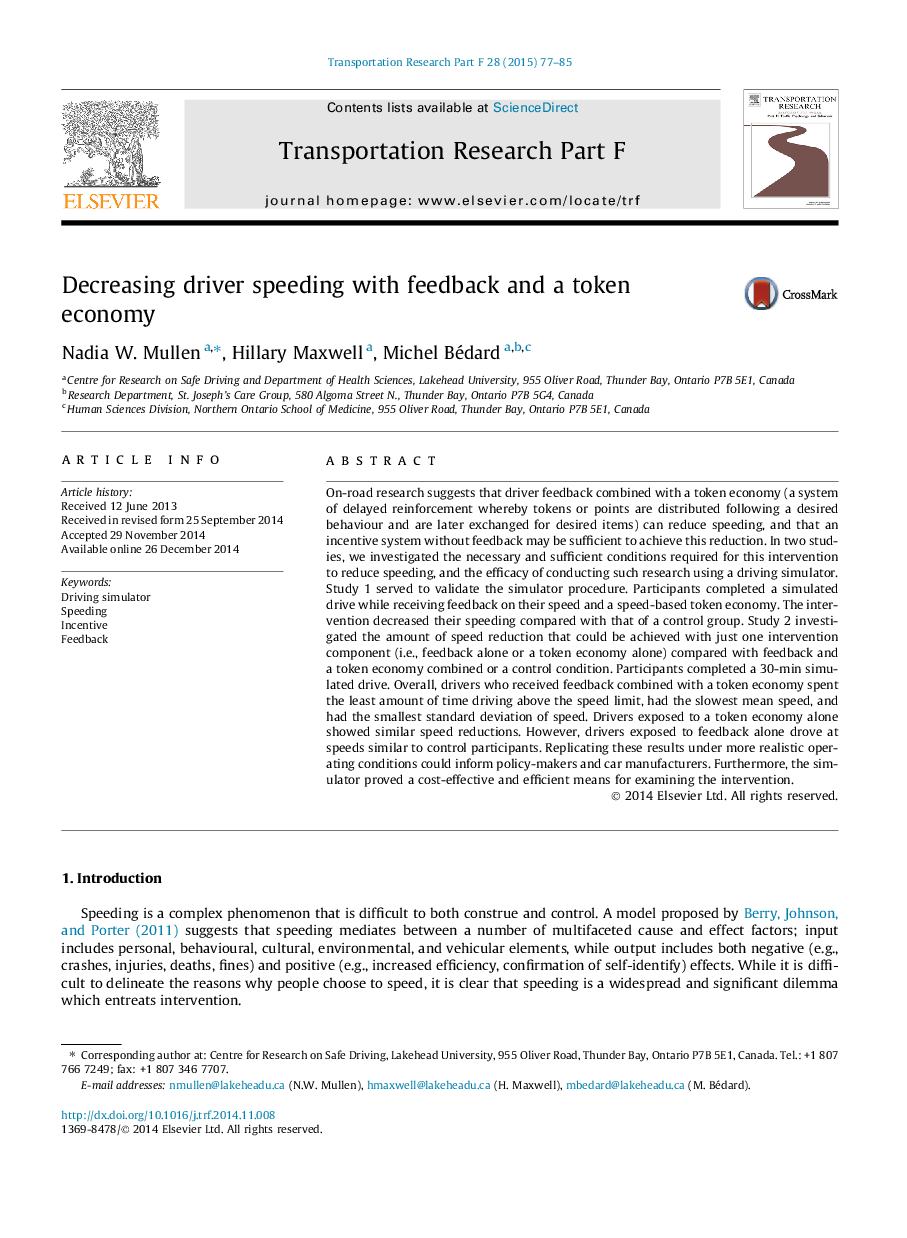| کد مقاله | کد نشریه | سال انتشار | مقاله انگلیسی | نسخه تمام متن |
|---|---|---|---|---|
| 897731 | 1472455 | 2015 | 9 صفحه PDF | دانلود رایگان |
• Feedback combined with a token economy decreased speeding on a simulated drive.
• A token economy was necessary and sufficient to reduce young drivers’ speeds.
• A driving simulator was cost-effective and efficient for examining interventions.
• Our simulator-based research found similar results to on-road research.
On-road research suggests that driver feedback combined with a token economy (a system of delayed reinforcement whereby tokens or points are distributed following a desired behaviour and are later exchanged for desired items) can reduce speeding, and that an incentive system without feedback may be sufficient to achieve this reduction. In two studies, we investigated the necessary and sufficient conditions required for this intervention to reduce speeding, and the efficacy of conducting such research using a driving simulator. Study 1 served to validate the simulator procedure. Participants completed a simulated drive while receiving feedback on their speed and a speed-based token economy. The intervention decreased their speeding compared with that of a control group. Study 2 investigated the amount of speed reduction that could be achieved with just one intervention component (i.e., feedback alone or a token economy alone) compared with feedback and a token economy combined or a control condition. Participants completed a 30-min simulated drive. Overall, drivers who received feedback combined with a token economy spent the least amount of time driving above the speed limit, had the slowest mean speed, and had the smallest standard deviation of speed. Drivers exposed to a token economy alone showed similar speed reductions. However, drivers exposed to feedback alone drove at speeds similar to control participants. Replicating these results under more realistic operating conditions could inform policy-makers and car manufacturers. Furthermore, the simulator proved a cost-effective and efficient means for examining the intervention.
Journal: Transportation Research Part F: Traffic Psychology and Behaviour - Volume 28, January 2015, Pages 77–85
